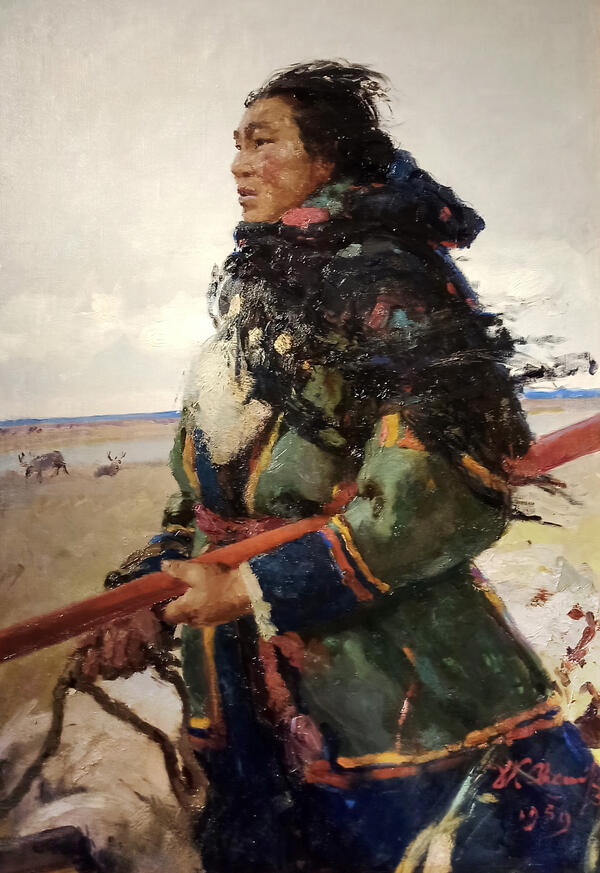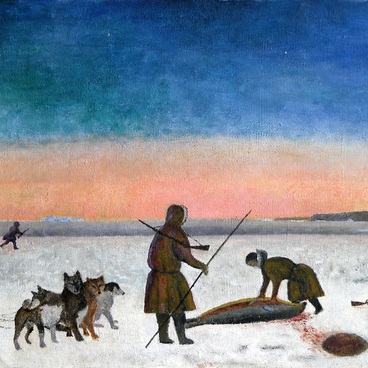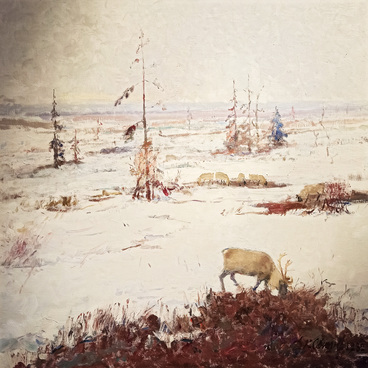Dmitry Sveshnikov was often jokingly referred to as ‘the master of the tundra’, an allusion to the title of one of his pictures. His main motif was northern scenery. He adored his land, with its peculiar nature, and stern-looking people that were so kind and tender-hearted. As a rule, Sveshnikov depicted the life of the Nenets reindeer collective farms. Having learned a lot about the Nenets people, Sveshnikov came to see their uncanny beauty, their spiritual wealth and their national identity. His portraits of tundra people represent a masterful depiction of human nature.
Sveshnikov felt about the northern people the way Rockwell Kent, an American painter and explorer, felt about the people of Newfoundland: ‘I was in no doubt that this faraway land is populated by kind people that are simple and wise, strong and courageous, brave and, in all, good by nature.’
In his ‘female’ series, Sveshnikov manifests himself as a master of modern portrait. One good example is the picture Taisiya Taibarey. He uses the ‘close-up’ technique that by then has been well established in his works. This way, the artist shows the character of the protagonist. The picture shows a new type of Nenets woman, a free spirit, an independent person that knows where she stands. In the portrait, we can observe one more feature of Sveshnikov’s style. The figure on the picture is embraced by the white vastness of the tundra, that is in some way similar to the woman standing on her native soil. Nature and the human being are not opposed to one another, they form an indivisible whole.
In this romantically sublime portrait, the artist has synthesised all the best features of the Nenets people. All the female figures by Sveshnikov are painted with much love and affection. The artist managed to reveal the beauty of the Nenets faces, with their slanted eyes and prominent cheekbones.
Sveshnikov felt about the northern people the way Rockwell Kent, an American painter and explorer, felt about the people of Newfoundland: ‘I was in no doubt that this faraway land is populated by kind people that are simple and wise, strong and courageous, brave and, in all, good by nature.’
In his ‘female’ series, Sveshnikov manifests himself as a master of modern portrait. One good example is the picture Taisiya Taibarey. He uses the ‘close-up’ technique that by then has been well established in his works. This way, the artist shows the character of the protagonist. The picture shows a new type of Nenets woman, a free spirit, an independent person that knows where she stands. In the portrait, we can observe one more feature of Sveshnikov’s style. The figure on the picture is embraced by the white vastness of the tundra, that is in some way similar to the woman standing on her native soil. Nature and the human being are not opposed to one another, they form an indivisible whole.
In this romantically sublime portrait, the artist has synthesised all the best features of the Nenets people. All the female figures by Sveshnikov are painted with much love and affection. The artist managed to reveal the beauty of the Nenets faces, with their slanted eyes and prominent cheekbones.




